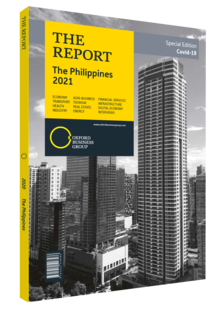Kelvin Ang, CEO, AIA Philam Life: Interview

Interview: Kelvin Ang
How would you assess the pace of digital transformation in the Philippines’ insurance sector?
KELVIN ANG: Several factors are shaping the digital transformation of the insurance industry, including the maturity of the economy and the sector itself; customer sophistication; and evolving regulations. Most companies in the market are focused on embracing digital tools and technology, and adopting these to increase efficiency, especially in terms of service delivery. While the implementation of digital services may not be as advanced as other economies, there is a consensus that digitalisation is the way forward. Indeed, the transition was fast-tracked due to the Covid-19 pandemic, and we can see steps being taken to integrate digital tools.
Which methods can boost life insurance penetration, and what could narrow the protection gap?
ANG: Increasing penetration rates is a top priority for both corporations and the regulator, and we are working together towards that goal. Technology is a key enabler across three pillars that, along with enhanced financial literacy, will allow increased penetration: products, services and distribution.
Digitalisation offers the opportunity to leapfrog in certain areas. For example, business underwriting in life insurance currently depends on a rule-based system, specific to each product, for the evaluation of policy requests. Digital programmes make it possible to use artificial intelligence (AI) instead of such rule-based methods by collecting the experience of the writings and underwritings to create models that can learn. In addition, AI improves the experience for both the customer and the distributor. The pandemic also led to a shift away from face-to-face service delivery models to paperless transactions and e-payment.
When it comes to products, insurance companies need to create more innovative and appealing products that are relevant for the vast majority of the population. When the pandemic hit, there was heightened demand for health insurance. However, the insurance products currently available in the Philippines are mostly longterm savings investment policies that target the A and B segments of the population, which represent only 1% of households in the country. Meanwhile, the C and D markets – which make up the rest of the population – are left unserved. The country needs products for the C market, which comprises the 10% of the population that is predominantly working class and lives on a chequeto-cheque basis and therefore needs protection rather than investment. Eventually, the D segment, which constitutes the remaining 89% of the population, will require micro-insurance products.
What are the main opportunities and challenges presented by the micro-insurance segment?
ANG: First, products have to be affordable and meaningful to the segment of the market that they target. In the D segment, for instance, affordable means less than P100 ($1.94) per month. The cost of distribution and service – the other key pillars to increase penetration – must also be low. Insurers need to find an efficient and effective way to distribute their products. At the moment, there are some platforms in the Philippines that can distribute micro-insurance policies, so the challenge when it comes to the D market is the readiness of products appropriate to this demographic. We are in the very early days of micro-insurance in the Philippines, but it will be crucial in the future, given that it can provide coverage to 89% of the population.
Micro-insurance needs to be easy to operate for those with limited financial literacy, and therefore should require little underwriting and simple maintenance of products. The claims process for micro-insurance policies must also be simple, and all transactions should be completed automatically and digitally for the benefit of the subscriber. For that reason, developing digital platforms will make it feasible to increase the penetration rates of micro-insurance policies.
You have reached the limit of premium articles you can view for free.
Choose from the options below to purchase print or digital editions of our Reports. You can also purchase a website subscription giving you unlimited access to all of our Reports online for 12 months.
If you have already purchased this Report or have a website subscription, please login to continue.

